The national flag of Costa Rica is a beautiful and inspiring symbol that embodies the nation’s core values of peace, democracy, and prosperity. Its design, which stands out among Central American flags, tells a powerful story of independence and a deep connection to its natural environment. Adopted in its current form in 1848, the flag is a source of immense national pride, representing a country that has famously abolished its army and built its identity on diplomacy and a love for its vibrant landscapes.
A Detailed Look at the Flag's Design and Symbolism
The flag of Costa Rica is a horizontal banner composed of five stripes. The top and bottom stripes are blue, followed by two white stripes, and a central, double-width red stripe. On the state flag, which is used by the government and for official purposes, the national coat of arms is placed on the red stripe.
Each color and element on the flag is rich with symbolic meaning, reflecting key aspects of Costa Rican history and culture:
-
Blue: The two blue stripes at the top and bottom represent the sky that covers Costa Rica, symbolizing idealism, opportunity, and perseverance. It also signifies the nation’s clear and beautiful sky, as well as its dedication to peace and justice. The blue color is a constant reminder of the country’s vast oceanic borders, the Pacific Ocean and the Caribbean Sea, and its commitment to freedom.
-
White: The two white stripes stand for peace, wisdom, and happiness. The white color represents the nation’s peaceful nature and its commitment to resolving conflicts through diplomacy rather than force. It also symbolizes the purity of the nation’s ideals and the joy and prosperity of its people.
-
Red: The central red stripe is a symbol of the blood shed by the national heroes who fought for independence. It is a tribute to the courage, valor, and generosity of the Costa Rican people. The red color also symbolizes the warmth and hospitality of the nation, reflecting the kindness of its citizens and their love for life.
The Intricate Coat of Arms
The national coat of arms, a complex and detailed emblem, is placed on the red stripe on the state flag. Its design is a tribute to the nation's geography, history, and economic life.
-
Three Volcanoes: In the center, three majestic volcanoes rise from the sea, representing the country’s three main mountain ranges. They symbolize the nation's resilience and its unique geological landscape. The seven stars above the volcanoes represent the seven provinces of Costa Rica, shining brightly in the nation's firmament.
-
Two Oceans: The volcanoes are situated between the Pacific Ocean and the Caribbean Sea, represented by blue waters. This imagery highlights Costa Rica's strategic location as an isthmus between two major bodies of water, and its historical role as a maritime trade hub.
-
Sailing Ships: A sailing ship is visible on each ocean, symbolizing the nation’s history of maritime trade and its connections to Europe and the Americas. The ships represent the country’s commerce and the opportunities that come from its oceanic borders.
-
The Rising Sun: A bright sun is seen rising above the horizon, symbolizing a new dawn for the nation and the birth of a new republic. The sun represents hope, progress, and the promise of a bright future for Costa Rica.
-
The National Motto: The name of the country, "República de Costa Rica," is written on a white scroll at the top. The motto, "América Central," is written on a blue banner below, a proud declaration of the nation’s place in the region.
Dimensions and Proportions
The official flag of Costa Rica has a width-to-length ratio of 3:5. The five horizontal stripes are not of equal height. The blue and white stripes each have a height of one-sixth of the total flag height, while the central red stripe has a height of two-sixths (or one-third) of the total height. This unique proportion is a distinguishing feature of the Costa Rican flag. The coat of arms, when present, is carefully centered on the red stripe.
The Genesis and Adoption of the Flag
The current flag of Costa Rica was designed in 1848 by Doña Pacífica Fernández Oreamuno, the wife of the then-President, José María Castro Madriz. She was inspired by the ideals of the French Revolution, particularly the colors of the French Tricolor, which she reinterpreted to fit Costa Rica’s unique identity. The design was officially adopted on September 29, 1848, and has remained the national flag ever since, with minor changes to the coat of arms over the years. This flag replaced a previous design that was based on the flag of the Federal Republic of Central America.
Meaning and Significance for Citizens
For the people of Costa Rica, the flag is a cherished symbol of their nation’s unique identity and values. It represents a country that has chosen a path of peace, disarmament, and environmental stewardship. The flag is proudly displayed on government buildings, schools, and homes, particularly during national holidays like Independence Day on September 15th.
The absence of a military and the nation's commitment to democracy and education are sources of immense pride, and the flag serves as a visual reminder of these accomplishments. For Costa Ricans, the flag is not just a symbol of the state, but a representation of the "Pura Vida" (Pure Life) philosophy—a peaceful, optimistic, and environmentally conscious way of life that defines their national character.
Interesting Facts
-
The Costa Rican flag is often confused with the flag of Thailand, as both feature five horizontal stripes of red, white, and blue. The key differences are the color arrangement and the central stripe’s width.
-
The current design of the flag was directly inspired by the ideals of the French Revolution and the French Tricolor, but the colors were given a new, distinctly Costa Rican meaning.
-
The national coat of arms has undergone several changes throughout history, with the most recent update in 1998 to reflect the addition of a seventh star for the newly created province of Puntarenas.
-
There are two versions of the flag: the civil flag, which is the striped banner without the coat of arms, and the state flag, which includes the coat of arms. Private citizens typically use the civil flag.
-
The "Día de la Bandera" (Flag Day) is celebrated every year on September 15th, alongside Independence Day, to honor the national symbol and its importance to the country’s identity.
In conclusion, the flag of Costa Rica is a masterpiece of symbolic design. Its colors and intricate coat of arms tell a comprehensive and moving story of a nation’s commitment to peace, its beautiful geography, and its enduring values. It is a powerful emblem of national identity, a reminder of its unique place in the world, and a source of profound pride for all Costa Ricans.
In the demonstration images, full-size flags are shown with proportions of 2:3, and hand-held flags with proportions of 1:2.
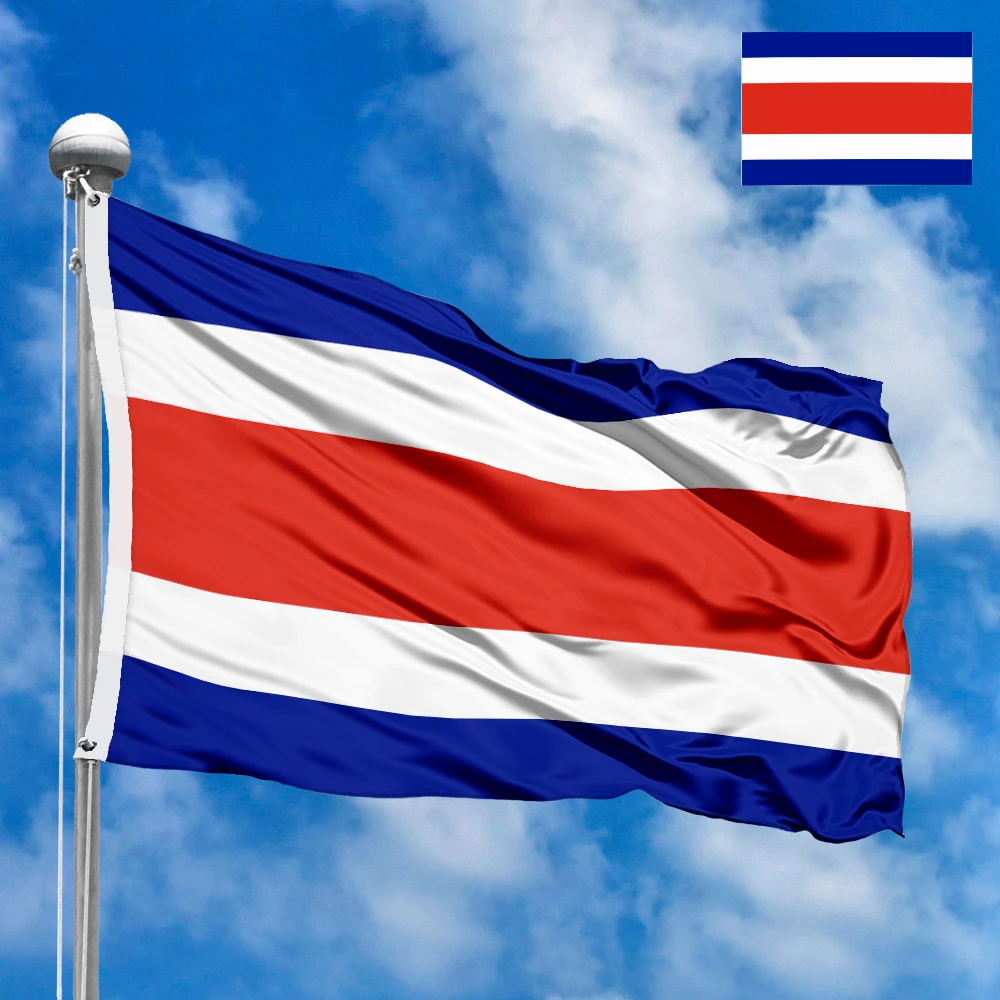

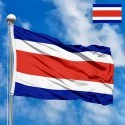
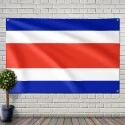
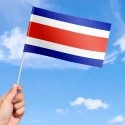

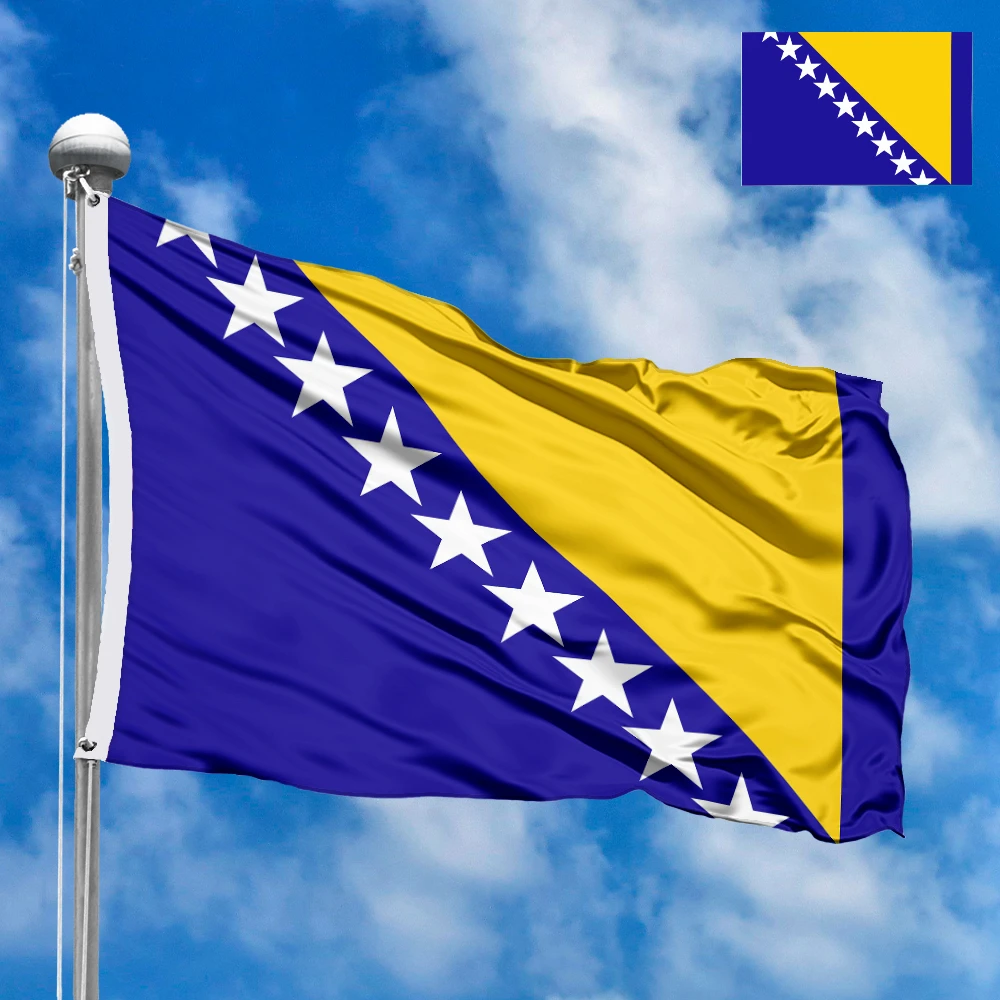
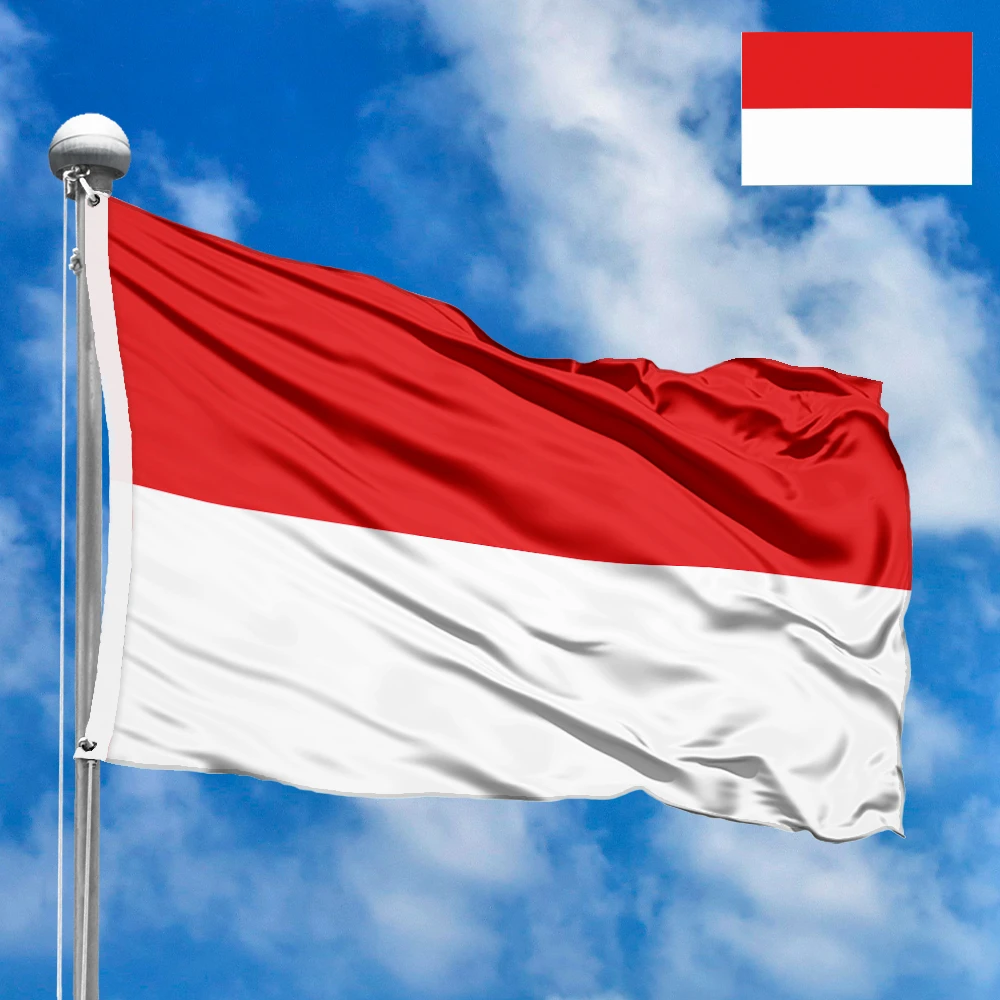





 Waving flag
Waving flag
 Sizes:
Sizes:
 Round flag
Round flag
 Sizes:
Sizes:
 Rectangular flag 2:3
Rectangular flag 2:3
 Sizes:
Sizes: